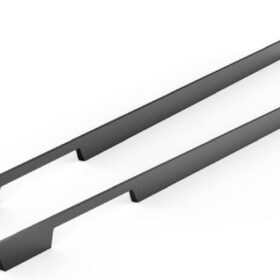How to Maintain and Clean Your Kitchen Counter Handles
The kitchen is a hub of activity, and the counter handles are one of the most frequently touched surfaces. Over time, dirt, grime, and bacteria can build up on these handles, making them unsightly and potentially unhygienic. Regular maintenance and cleaning are essential to keep your kitchen counter handles looking their best and functioning properly.
Regular Maintenance
Inspect Handles: Regularly check your counter handles for any signs of damage or wear. Loose screws or frayed finishes should be addressed promptly to prevent further issues.
Tighten Screws: Every few months, check the tightness of the screws that secure the handles to the cabinets or drawers. Loose screws can cause the handles to wobble or fall off.
Lubricate Mechanisms: If your counter handles have moving parts, such as hinges or latches, occasionally lubricate them with a light oil. This will keep the mechanisms operating smoothly and prevent squeaking.
Cleaning Intervals
The frequency of cleaning your counter handles will depend on the frequency of use and the type of material they are made from. As a general rule, clean handles at least once a week or more frequently if there is heavy usage or visible dirt.
Cleaning Methods
Mild Detergent: For most materials, a mild detergent and water solution is sufficient for cleaning counter handles. Use a soft cloth or sponge to apply the solution and wipe down the handles, paying attention to crevices and edges.
Disinfectant: For handles made of materials that are prone to harboring bacteria, such as wood or plastic, use a disinfectant or antibacterial cleaner. Follow the manufacturer’s instructions for dilution and application.
Abrasive Cleaners: Harsh abrasive cleaners should be avoided, as they can damage the finish of the handles. If necessary, a mild abrasive, such as baking soda or cream of tartar, can be used sparingly on stubborn stains.
Specific Materials
Metal Handles: Metal handles are relatively easy to clean. Use a mild detergent or vinegar solution to wipe them down. Avoid harsh chemicals or abrasive cleaners that could scratch the finish.
Wood Handles: Wood handles require more care. Use a damp cloth with a mild detergent and wipe along the grain. Avoid using too much water, as it can damage the wood.
Plastic Handles: Plastic handles can be cleaned with a mild detergent and water solution. Avoid using abrasive cleaners that could scratch the surface.
Glass Handles: Glass handles are delicate and should be cleaned with a soft cloth and a glass cleaner. Avoid using abrasive cleaners or harsh chemicals.
Stone Handles: Stone handles can be cleaned with a mild detergent and water solution. Avoid using acidic cleaners or abrasive cleaners, as they can damage the stone.
Additional Tips
Old Toothbrush: Use an old toothbrush to remove dirt and grime from crevices and hard-to-reach areas.
White Vinegar: White vinegar is a natural disinfectant and cleaner. Wipe down handles with a vinegar solution to remove bacteria and stains.
Baking Soda: Baking soda is a mild abrasive that can be used to remove stubborn stains. Make a paste with baking soda and water and apply it to the stain. Leave it on for a few minutes and then rinse thoroughly.
-
2024-11-29Top Trends in Modern Kitchen Cabinet Pulls for 2024
-
2024-11-28The Ultimate Guide to Modern Kitchen Cabinet Pulls- Materials, Styles, and Tips
-
2024-11-27Elevate Your Kitchen Design with These Must-Have Modern Cabinet Pulls
-
2024-11-26Sleek and Stylish- The Best Modern Kitchen Cabinet Pulls for a Contemporary Look










